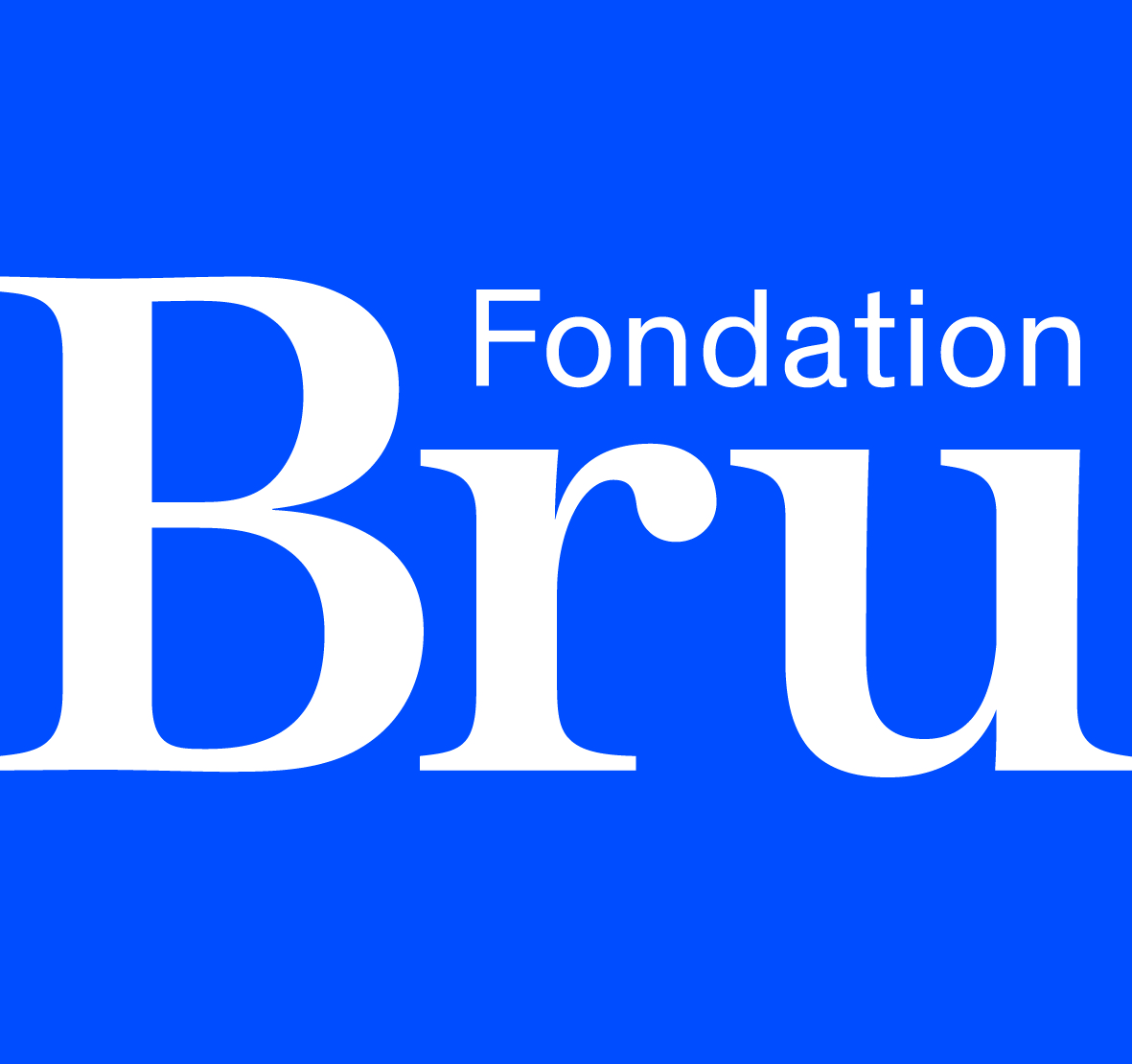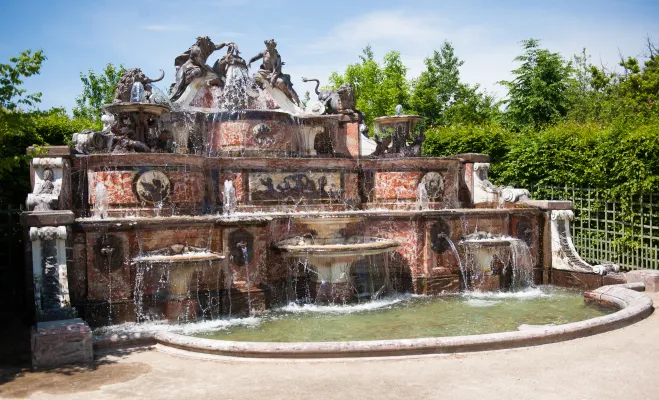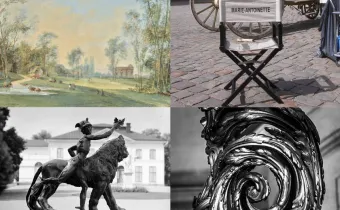The Buffet d’Eau: a true masterpiece
Nestled in the Grand Trianon’s gardens, the Buffet d’Eau is an Italian-inspired fountain monument built by Jules Hardouin-Mansart in 1702, before being altered and tweaked several times on Louis XIV’s orders. Despite a very frontal feel, this majestic monument measures 12 meters deep from the front of the basin to the back of the stonework.
From the moment it was first unveiled, a series of water features cascaded down into the basin, with each different angle creating a wash of water that would then spill down into the row of white marble bowls. Angled jets sprayed out from within the four masks used to adorn the lower section and embody the winds (Boreas, Eurus, Auster, Zephyrus), with the different nuances of marble enhanced by the glistening water.
Major restoration works
Restoring the Buffet d’Eau is a flagship heritage project for the Palace of Versailles. The fountain was last restored in 1892, and now bears a number of alterations on the marble, the lead-sculpted figures and decorative pieces, and the functionality of the water effects.
The restoration works will tackle the monument as a whole, repairing the fountain construction and sealing, and refurbishing the sections around the edges of the basin. These works will call for highly skilled and specific expertise in marble-working, fountain-building, welding, and hydraulic engineering.
Following on from the restoration work on the Trianon gardens’ hydraulic system that was carried out from 2019 to 2021 thanks to patronage by the Fondation Bru, this project will bring one of the Trianon gardens’ little-known yet spectacular fountain monuments back to life, reinjecting them with all the splendor that Louis XIV had envisioned for his country residence.
the fondation bru
The Geneva-based Fondation Bru was set up in tribute to the founders of the Laboratoires UPSA. It encompasses all the patronage initiatives that Doctor Nicole Bru sparked in the past, continuing work on them while simultaneously seeking new ones.
The Fondation Bru sets out to provide long-term support and assistance for projects concerned with education and safeguarding heritage, often becoming involved in the very earliest stages of the projects it backs. Over and above financial support, it strives to play a long-term role in helping projects grow and paving the way for new partnerships.
As the living embodiment of this entrepreneurial spirit and sense of human connection, Doctor Nicole Bru continues to guide the foundation today through the effort and commitment she pours into working for the common good.
As early as 1993, she set up the UPSA Pain Institute, followed by the Association Docteurs Bru in 1994. Working out of the house in Agen where the company first launched, in 1996 the association opened its Maison d’Accueil Jean Bru, a pilot shelter for young girls who had been subjected to sexual abuse or incest.






